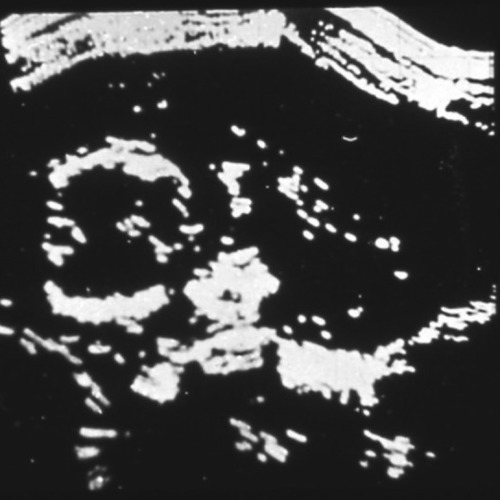More than 55,000 abortions at 15 weeks gestation or later take place each year in the U.S. That’s over 150 late-term abortions per day — That’s almost seven elementary school classrooms of kids per day.
The latest science shows unborn babies can feel pain by at least as early as 15 weeks.
Get the Fact Sheets
In five decades, we've learned they are just like us.
Statistics







Most late-term abortions are performed for elective reasons.
The most recent state-level data shows that the majority of late-term abortions are performed for elective reasons.
In Florida and Utah, 88% of second-trimester abortions are elective. National studies and estimates are in line with the examples from Florida and Utah.
Less than 1% were done for the tragic cases of a life-threatening health issue, rape, or incest.
Even the pro-abortion Guttmacher Institute admits that “data suggests that most women seeking later terminations are not doing so for reasons of fetal anomaly or life endangerment.”
Summary: Second Trimester Abortion by Reason



Science does not stand still.
In the 1970s, ultrasound images were black and white dots. Today, they are 3D and 4D. As our ability to observe unborn babies has advanced, so has scientific knowledge advanced.
Ultrasound scan from 1965 showing the heads of twins1; Modern ultrasound2
It's Time to Follow the Science
Science has advanced considerably since the Roe v. Wade decision in 1973. But in 2022, modern technology allows us to observe more about life in the womb than ever before. We know that by 15 weeks, children in the womb have fully formed noses and lips, eyelids and eyebrows; they can suck their thumbs; and they feel pain. Yet the United States remains in the company of just a handful of countries, including China and North Korea, that permit late-term abortion on demand. By contrast, 47 out of 50 European nations limit elective abortion prior to 15 weeks.
Fetal Development Facts
The viability standard is highly outdated. In the nearly five decades since Roe was decided, science and technology have revealed much more about fetal development. Below you will find amazing facts about the development of a 15-week-gestation fetus.
During an individual’s first three weeks of life, this pattern of genes forms the body’s structure. The single cell starts dividing, and each proceeding cell continues dividing, about once every eight hours or so.8 Thus, the embryo grows at an exponential rate! During the first week, the embryo travels to the uterus and embeds into the uterine wall in a multi-day process called implantation. Amazingly, even before implantation, the embryo releases chemicals forming a biochemical connection with his mother.9 Tissues interact to form the placenta and umbilical cord, which are nature’s greatest life support system for the developing human.
In the third week, chemical gradients formed by the mother’s body and the embryo itself help the embryo develop a body plan. While during the first week, each embryonic cell could become any of the 4,500 different types of cells in a human body, now each cell starts to specialize based on its position.10 Some cells receive chemical messages to become skin and nerve cells while others receive messages to become part of the lungs or intestines. Each of these cells continues to specialize based on the other cells around them, and every piece of the intricate body plan falls into place. In fact, almost every organ and tissue forms within the first eight weeks after conception. The rest of the pregnancy is spent growing these organs larger and more mature to prepare for life outside the womb.11
By 15 weeks of pregnancy, every major organ has grown and most are functional. The kidneys filter toxins out of the fetal bloodstream and the stomach and pancreas produce digestive enzymes.12 Peristalsis, the contractions in the intestines that propel food through the digestive system, starts eight weeks after conception and does not stop until death.13 Similarly, the heart moves blood through the embryo and fetus, which started just 22 days after conception with the first heartbeat and will not stop until death.14 Nerves have connected to skin and muscle so that the embryo can move away from things that touch him starting five-and-a-half weeks after conception.15 The major system that develops latest is the lungs. While the lobes of the lung and the airways are in place at 15 weeks’ gestation, the alveoli, where gases are exchanged with blood, need time to grow. Although the fetus practices breathing in the womb starting eight weeks after conception,16 the baby’s lungs still need more time to mature before the fetus is ready for life outside the womb.17
When scientists studied fetal movements at 14 weeks’ gestation, they found that the fetus has goal-directed movements toward her own eyes and mouth as well as the uterine wall. Furthermore, if the fetus has a twin, some of her movements will be directed towards the twin as well.23 Additionally, the fetus moves more gently when reaching towards her twin’s face.24 Similarly, by 18 weeks’ gestation, the fetus will reach for her eyes and mouth faster and with greater precision when she uses her dominant hand.25
A 15-week-gestation fetus has plenty of tastebuds on his or her tongue, and these have connected with the cranial nerves, allowing the fetus to experience multiple tastes from a young age.32
As mentioned earlier, the thalamus forms connections with the neurons that will migrate into the cerebral cortex as early as 12 weeks’ gestation,37 and the thalamus forms connections with the true cerebral cortex after 24 weeks‘ gestation.38 While some scholars suggest that the cortex is absolutely necessary for the perception of pain, a growing body of research suggests that it is not. For example, one case study has shown that a 55-year-old patient experienced pain even when he had extensive damage in the cortical regions that process pain,39 and children lacking a cortex often react to pain in ways similar to neurotypical children.40
While the cortex may not be fully developed, a number of brain structures that process pain activity including the brainstem, insula, and thalamus, are sufficiently mature to process pain at 15 weeks’ gestation.41 Sekulic and colleagues state: “Bearing in mind the dominant role of the reticular formation of the brain stem, which is marked by a wide divergence of afferent information, a sense of pain transmitted through it is diffuse and can dominate the overall perception of the fetus.”42 Furthermore, pain processing appears to develop before the mechanisms that moderate pain signals, so the fetus may experience a greater intensity of pain at 15 weeks’ gestation than an older fetus or child.43
Fetal surgery has proven successful in treating twin-to-twin transfusion syndrome, spina bifida, congenital heart defects, and other disorders.51 In twin-to-twin transfusion syndrome more blood flows abnormally between identical twins who share one placenta. This jeopardizes the lives of both twins. If left untreated, one or both of the twins may die. Surgeons use a minimally invasive technique, called fetoscopic laser ablation, to disconnect shared blood vessels in the placenta connecting the twins. This surgery has been successfully performed on twins as young as 14 weeks and six days’ gestation.52 Multiple surgical teams have performed this technique on twins at 15 weeks’ gestation.53 When performed promptly, fetoscopic laser surgery gives the best outcomes for saving both babies.
Similarly, spina bifida is a severe disorder in which part of the baby’s spinal cord does not close properly. Depending on the location and extent of the damage, spina bifida can cause intellectual and motor impairments, including paralysis of the legs. In the past, surgeons would repair the spinal cord defects in the first few days after birth to try to give the infants the best chance to heal and grow on a normal trajectory. However, doctors discovered that repairing the defect before birth led to better outcomes for the child. In a groundbreaking study from the Children’s Hospital of Philadelphia, treating babies while still in the womb was so effective that the trial was stopped early so that every baby could benefit from the prenatal spinal cord repair. When surgery was performed on fetuses before 26 weeks’ gestation, the children experienced lower rates of death and neurological complications, as well as better mental and motor outcomes. In fact, many of these children could walk independently after the early intervention.54
It is interesting to note that in prenatal surgeries, the fetus is anesthetized separately from the mom to create the best outcomes for the surgery.55 Thus, the medical establishment treats a fetus as a patient with full rights when the mother eagerly wants to keep her child alive.
These facts on fetal development were taken from 15 Facts at 15 Weeks, a report by Charlotte Lozier Institute associate scholar Katrina Furth, Ph.D.
We stand with moms.
The Pro-Life Movement stands ready to come alongside pregnant moms and their children and families to provide the resources they need to thrive. A 2019 study found that more than 2,700 pro-life pregnancy centers nationwide served almost two million people at an estimated value of nearly $270 million.
Polling
The American people recognize that the court-imposed viability standard is inhumane. They side with the accelerating scientific advancements that confirm the humanity of the unborn, and reject abortion extremism.

